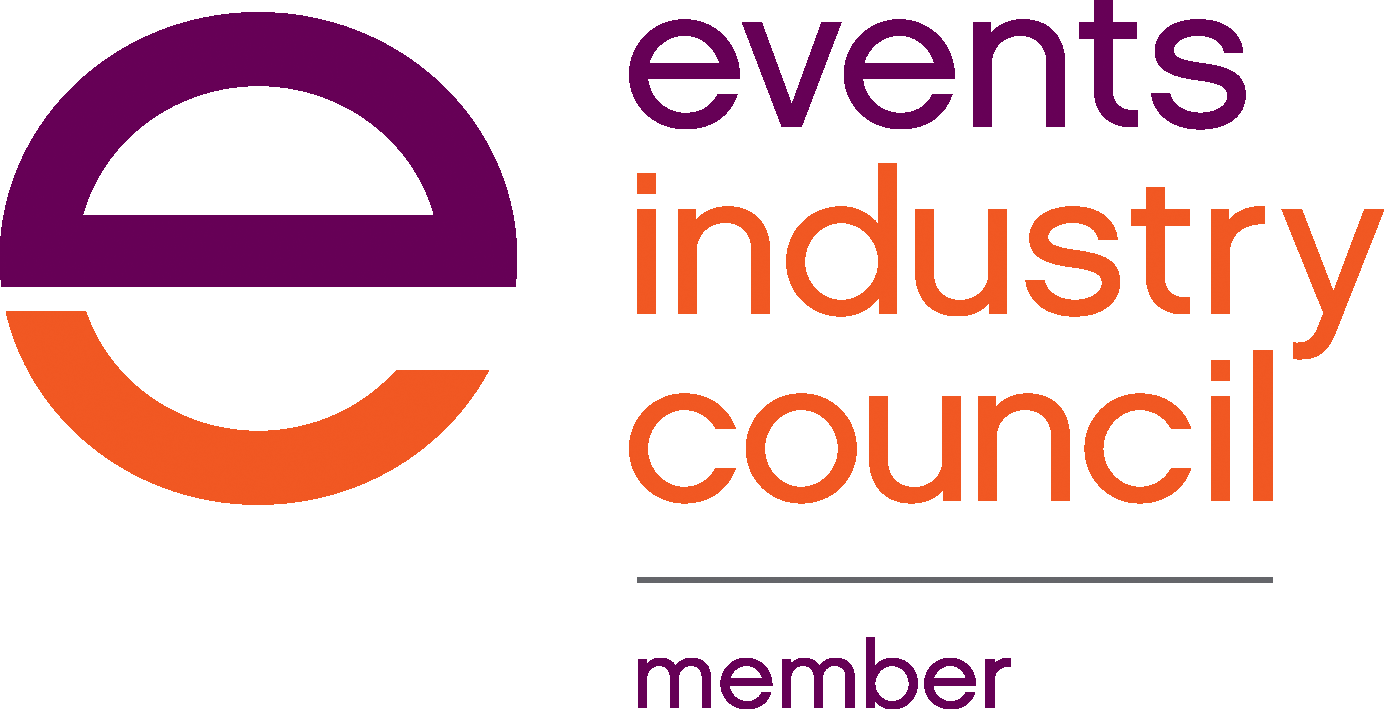The idea of crowdsourcing isn’t new. But the meetings industry is becoming increasingly savvy when it comes to using this tool to enhance events. Crowdsourcing is soliciting information from a large group of people for a specific project or engaging attendees before the event. Meeting planners can use this information for everything from determining which guest speaker attendees would like to hear from during their general session to getting valuable topic ideas about breakout sessions. For more information on crowdsourcing and its uses, check out this blog from Kalahari Resorts & Conventions.
Creating Event Experiences: Food Truck Program
In February, ESPA hosted a webinar on Creating Event Experiences featuring Amanda Bonvechio, CMP, CSEP, Director, Convention & Event Experience, Destination Cleveland. A hot topic during that session was on a Food Truck program offered in Cleveland called the CLE Meet & Eat. There were so many questions from our audience that we ran out of time, so here we continue some of that Q&A with Amanda for the benefit of all of our members.
Q: Do the food trucks require a flat fee to show up for the lunch hour? Or do they allow the conference/group to pay the bill at the end?
A: No, the food trucks do not require a flat fee to show up, however Destination Cleveland obtains their food minimum costs prior to the event and budgets extra funds to pay the difference of what money they make during the event and their food minimum. Most times, the trucks make over their minimums.
We have done payment both ways where the attendees pay for their own and where the planner sponsors the event and pays at the end. As long as the food truck is notified prior to the event about how and when they will get paid (in writing), they are good with both ways.
Q: How close is your convention center to restaurants? Does the truck program impact fixed restaurants?
A: Our convention center is close to restaurants, however they are on the higher end and wouldn’t be considered for a quick, inexpensive option for a breakfast or lunch. Therefore, the program doesn’t impact those restaurants as they wouldn’t have been utilized without it.
It is also important to note that we do not want to displace potential revenue from the convention center caterer or impact any F&B minimums that are contracted. Therefore, we wouldn’t offer, or agree to, this service if those factors were impacted by the program unless the planner and caterer came to a mutually beneficial agreement prior to the event.
Q: What are the costs associated with the Food Truck program besides permits, picnic tables, electricity access?
A: – Food Truck Minimums – No matter how the food trucks are paid (prior to event by planner, at the time-of-sale by the attendee, etc., Destination Cleveland will make up the difference if their minimum to participate is not meant. For example, if the food truck has a minimum of $2,000 per day to participate, yet they only make $1,350 during the event, Destination Cleveland will pay the food truck the difference of $650 post-event. This is to ensure that the food truck will show up to the event day.
– Waste Management – Destination Cleveland will also obtain and pay for waste management services to include trash and recycle receptacles, set up, onsite trash removal and clean-up post-event.
– Possible Entertainment – for certain groups, we will also provide live entertainment to enhance the experience.
– Security – The City of Cleveland requires security to block traffic to the closed street, as well as to observe during the event.
Meetings & Events Industry Releases New Economic Impact Data
Key findings from a new report show how face-to-face meetings and business events support 5.9 million jobs and hundreds of billions of dollars in annual revenue. Download a quick Fact Sheet.
Washington, D.C. – Face-to-face meetings and events play an integral role in bolstering our national economy and key business sectors, according to a new report from Oxford Economics, commissioned by the Events Industry Council, and supported by the Meetings Mean Business Coalition and other industry partners. Data for the report was compiled through a nationwide survey of meeting planners, exhibitors and venues and represents almost 9,000 domestic business travelers, almost 50,000 international air travelers and 11,000 hotels.
“Our report illustrates that the meetings and events industry continues to grow across all segments as it contributes hundreds of billions of dollars in revenue to the U.S. economy and supports 5.9 million jobs,” says Adam Sacks, founder and president of Tourism Economics, an Oxford Economics company. “Notably in 2016, meetings generated $325 billion of direct spending and $845 billion in business sales. These numbers represent a contribution of $446 billion in GDP and $104 billion of federal, state and local taxes. The total tax impact per household was $879 per U.S. household.”
In total, 1.9 million meetings were held in 2016, with 251 million participants. On average, the direct spending associated with 43 meeting participants supported one U.S. job, including both direct and indirect impacts.
Meetings supported more direct jobs than many large manufacturing sectors, including machinery, food, auto, and chemicals. It sustained more jobs than the telecommunications and oil and gas extraction industries as well.
The cumulative economic impact of face-to-face meetings and events is hard to deny. Results show that every dollar spent on face-to-face meetings and events generates an additional $1.60 – or 160 percent – in benefits for the U.S. economy.
Direct spending on meetings expanded 23 percent between 2009 and 2016, primarily due to increases in the number of meeting participants.
“There’s been a critical need for information quantifying the significance of face-to-face meetings and business events to the U.S. economy,” says Susan Robertson, executive vice president of the American Society of Association Executives and chair of the Events Industry Council. “Hosting an event, convention or trade show brings new revenue to industries across the country. So many people and companies beyond the scope of the events industry itself benefit from its reach.”
Business services was the industry most impacted by meetings in 2016, with $196.3 billion in total economic output. The finance, insurance, and real estate industry followed with $141.1 billion in total economic output, followed by the manufacturing industry with $92.6 billion in total output.
Other industries that were positively impacted by face-to-face meetings and events include:
- Food & Beverage: Meeting organizers and hosts spent $48 billion to provide food and beverage services at meetings.
- Hotels & Lodging: Meetings generated 300 million room nights annually, representing nearly $50 billion of spending on accommodations.
- Travel & Tourism: Meetings-related travel expenses represented 13.2 percent of total travel and tourism spending in the U.S.
“This new research confirms that our industry plays a critical role in connecting people and bolstering crucial segments of our national economy,” says Paul Van Deventer, president and CEO of Meeting Professionals International and co-chair of the Meetings Mean Business Coalition. “The numbers reiterate what anecdotally we always knew to be true – no matter the industry, investing in face-to-face meetings is a smart choice.”
To read the full report, please click here.
# # #
About the Report: To quantify the economic significance of the U.S. meetings sector for the Events Industry Council, Oxford Economics analyzed industry information and prepared a comprehensive measure of sector activity and corresponding economic impacts. This research represents the most comprehensive analysis of meetings sector impacts to date.
The Events Industry Council is comprised of more than 30 event industry associations representing more than 103,500 individuals and 19,500 organizations involved in the meetings, conventions and exhibitions industry. The council facilitates the exchange of information develops programs to promote professionalism within the industry and educates the public on its profound economic impact. For more information, visit www.eventscouncil.org.
Meetings Mean Business is an industry-wide coalition to showcase the undeniable value that business meetings, trade shows, incentive travel, exhibitions, conferences and conventions bring to people, businesses and communities. By rallying industry advocates, working with stakeholders, conducting original research, engaging with outside voices and more, the coalition brings the industry together to emphasize its importance. Comprised of over 60 members, the coalition unites the meetings industry with one strong and powerful voice. For more information, visit www.MeetingsMeanBusiness.com.
Oxford Economics is one of the world’s foremost independent global advisory firms, providing reports, forecasts and analytical tools on 200 countries, 100 industrial sectors and over 4,000 locations. Our best of-class global economic and industry models and analytical tools give us an unparalleled ability to forecast external market trends and assess their economic, social and business impact. For more information, please visit www.oxfordeconomics.com.
November Events Trend: Campfire Sessions
ESPA’s Executive Director Lynn McCullough visited IMEX in October and experienced neat formats for event interaction and sessions. During Campfire sessions, attendees gathered around a facilitator in small groups using seats that ranged from stools to soft seating. No tables needed. No slides. The speaker is not always right – the idea is interactive discussion around a designated topic in a relaxed setting. Cool custom printed cardboard stools add an interactive, fun component – the stools can be assembled by each participant as step one of the campfire chat (visit www.festivalchairs.com/en). Campfire sessions were held in exhibitor booths (pictured on the link below is Thorben Grosser, Eventmobi leading one) and also in IMEX’s Inspiration Hub, sponsored by Maritz Global Events.
October Events Trend: CSR activities
CSR activities come in many shapes and forms. There are amazing outings where attendees can get out into our communities and be hands-on with local service organizations. Cleaning up a beach, working at a food bank. These are all great opportunities. Occasionally clients may have limited time or budgets to take groups to off-site activities like these. Do you — whether hotel, Center or CVB — readily offer or educate your planner clients about opportunities that can be done right under the roof at the event venue? Make it easy for your planners! Beyond your own grassroots effort, local and nationwide organizations can organize this type of activity that groups can do in between sessions, on breaks, or even on registration day after they pick up their badge. The result – superb networking while doing good and without significant time investment. ESPA will host Clean the World hygiene kit assembly at the Conference, and others such as Shopping for Change also offer this service.
The Events Industry Council Shares the 5 Trends Shaping the Events Industry
ESPA is a member of the Events Industry Council. Recently we attended a Council of Delegates meeting, read on for trends identified during this event.
Washington, D.C. (May 16, 2017) — The Events Industry Council releases the top five trends shaping the events industry after discussing the state of the industry at their recent Council meeting. The Events Industry Council members comprise the CEOs of more than 30 of the leading industry associations – that represent more than 103,500 individuals and 19,500 firms and properties involved in the meetings, conventions, and exhibitions industry.
“The Events Industry Council is plugged into the leading organizations in our industry and we always use time at our Council meetings for a healthy exchange about what everyone is experiencing,” said Karen Kotowski, CAE, CMP, President and CEO, Events Industry Council. “Our discussion involved the changing nature of the industry, the emergence of new tech trends and even the current state of political affairs.”
Following are the five key trends that event professionals should watch closely in the year ahead:










